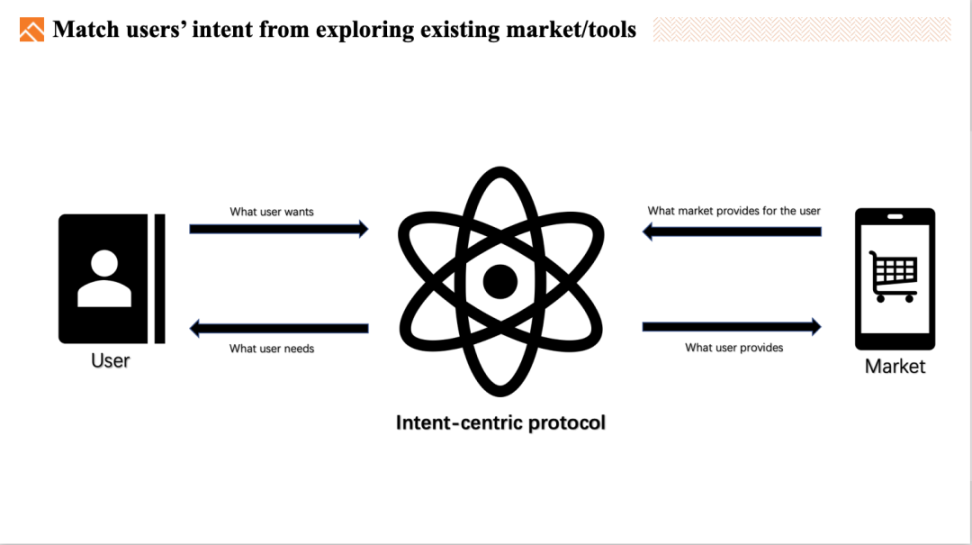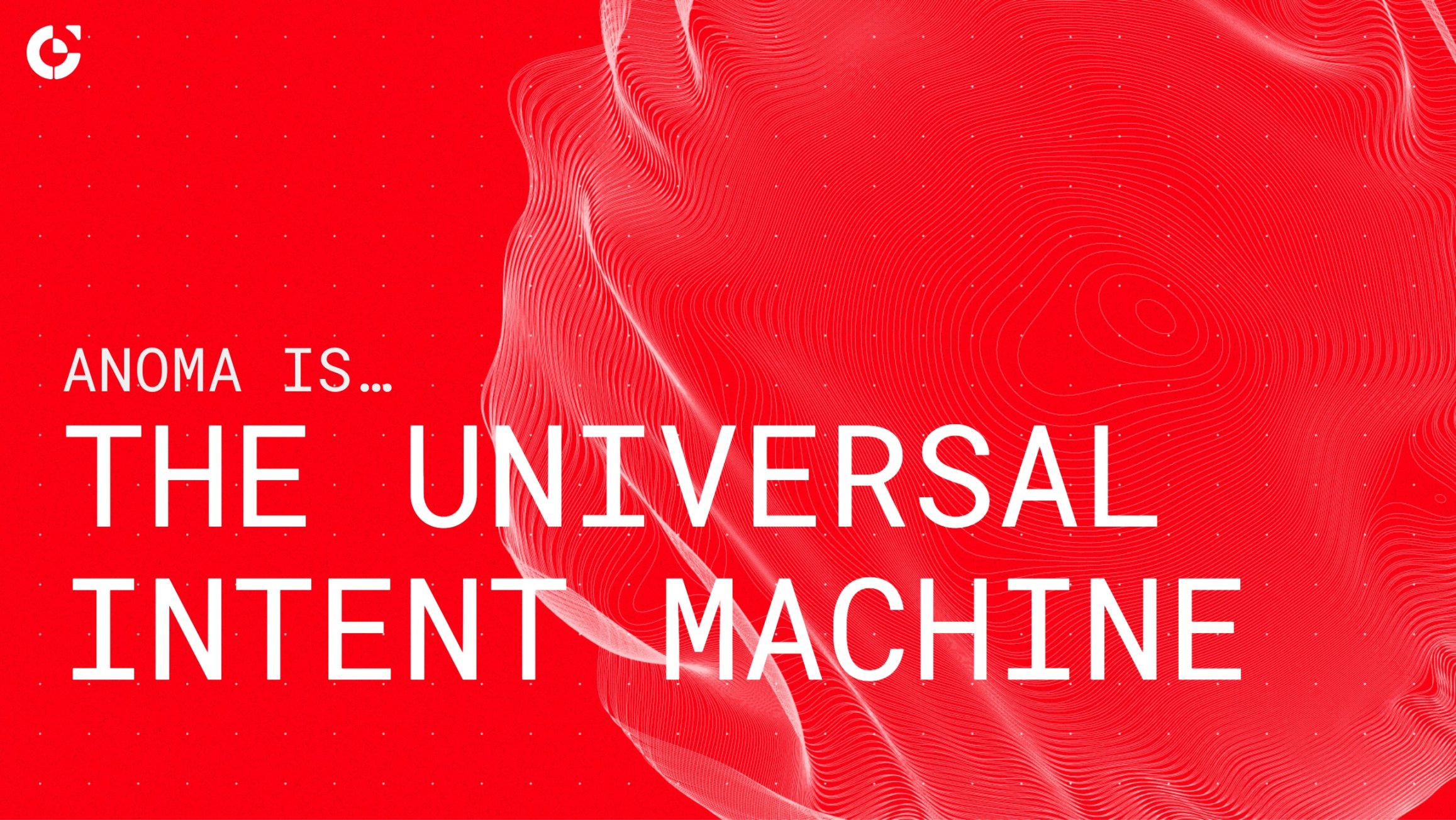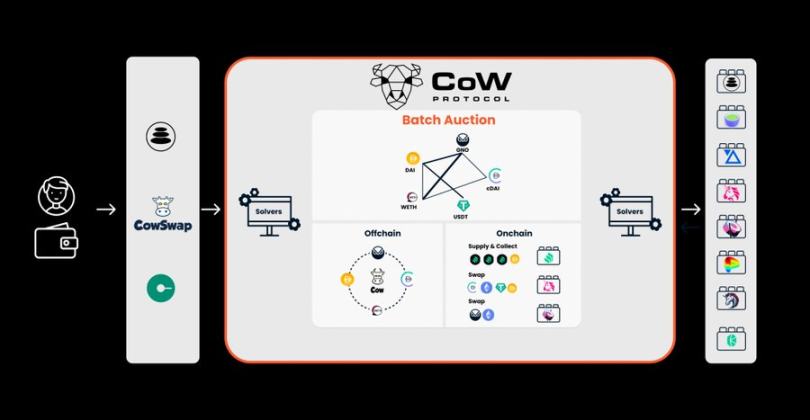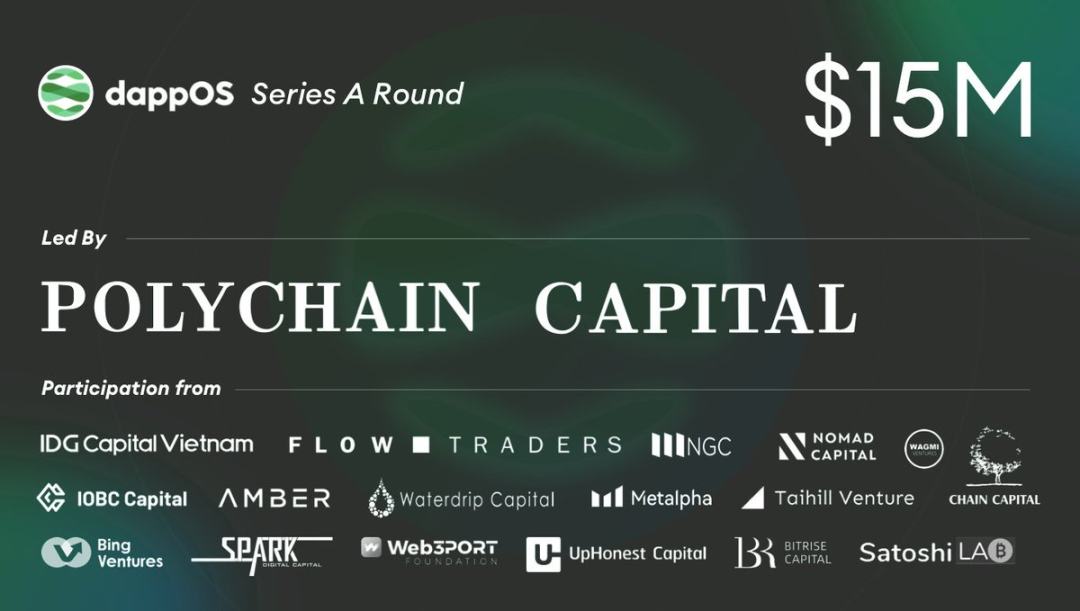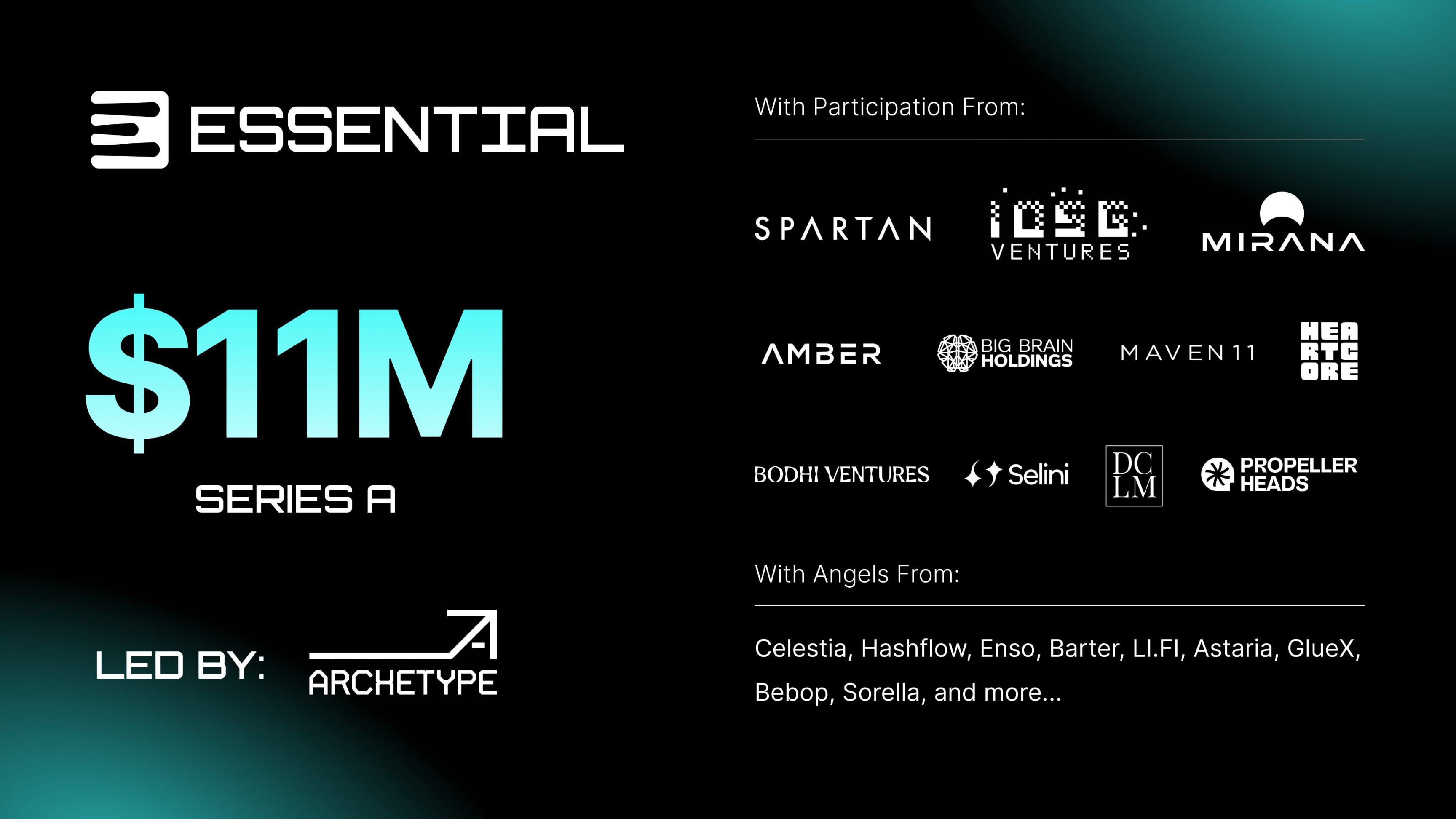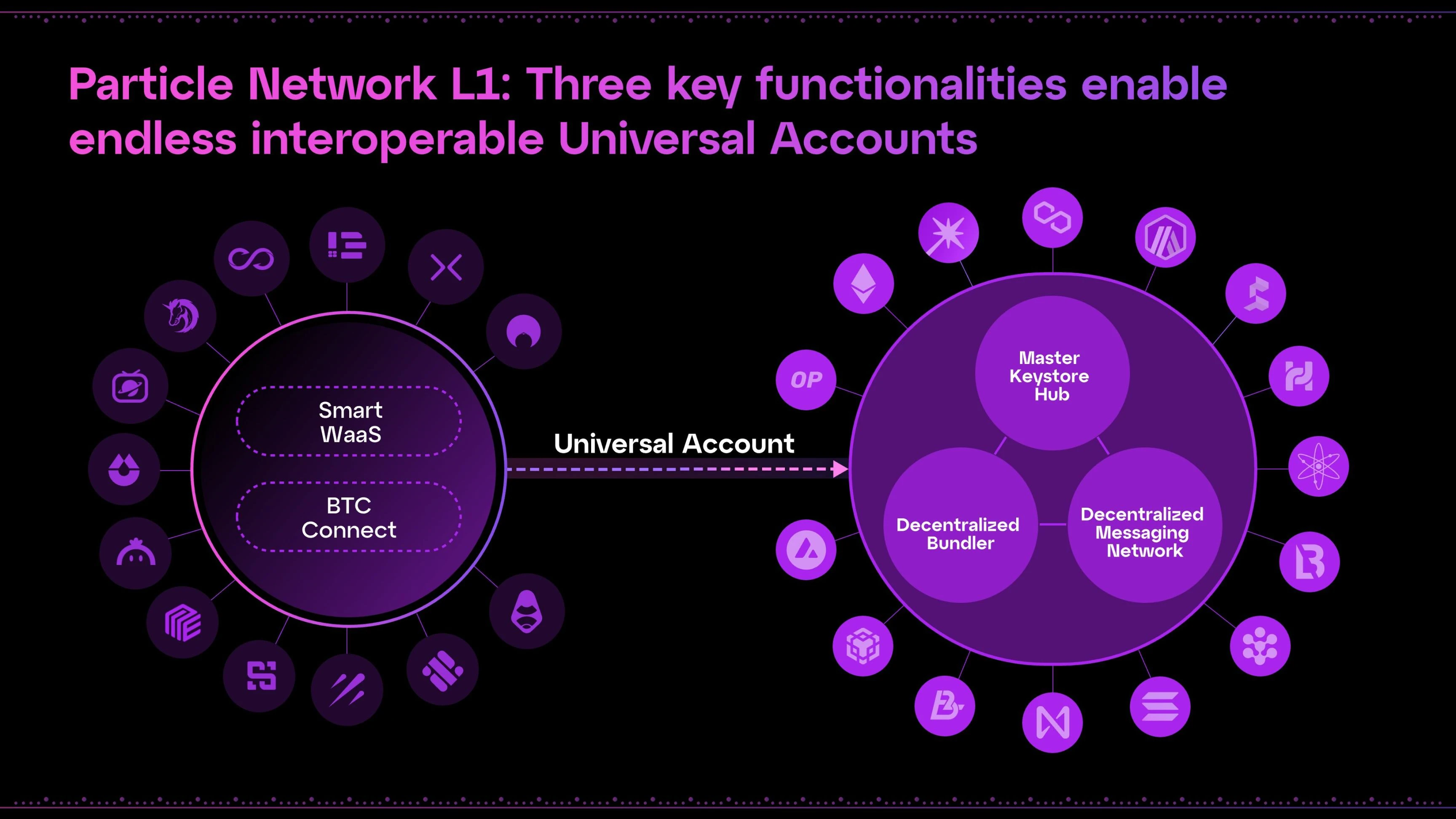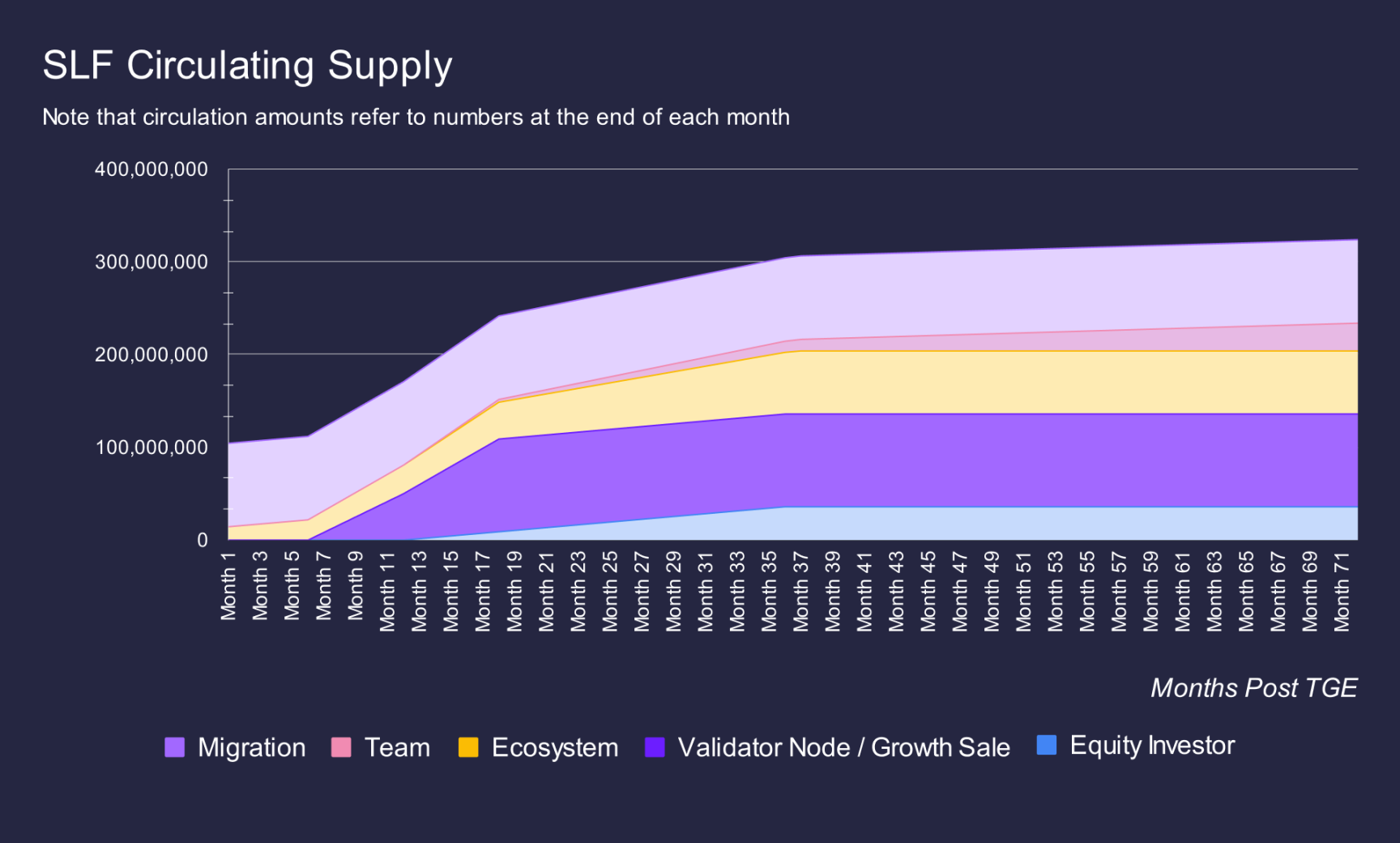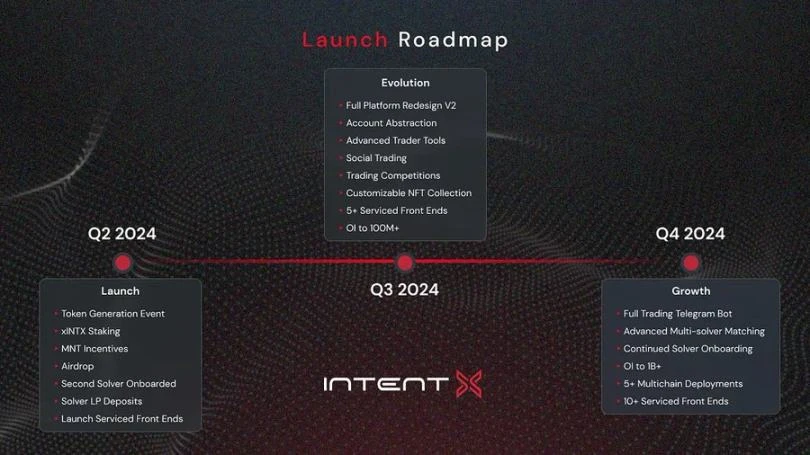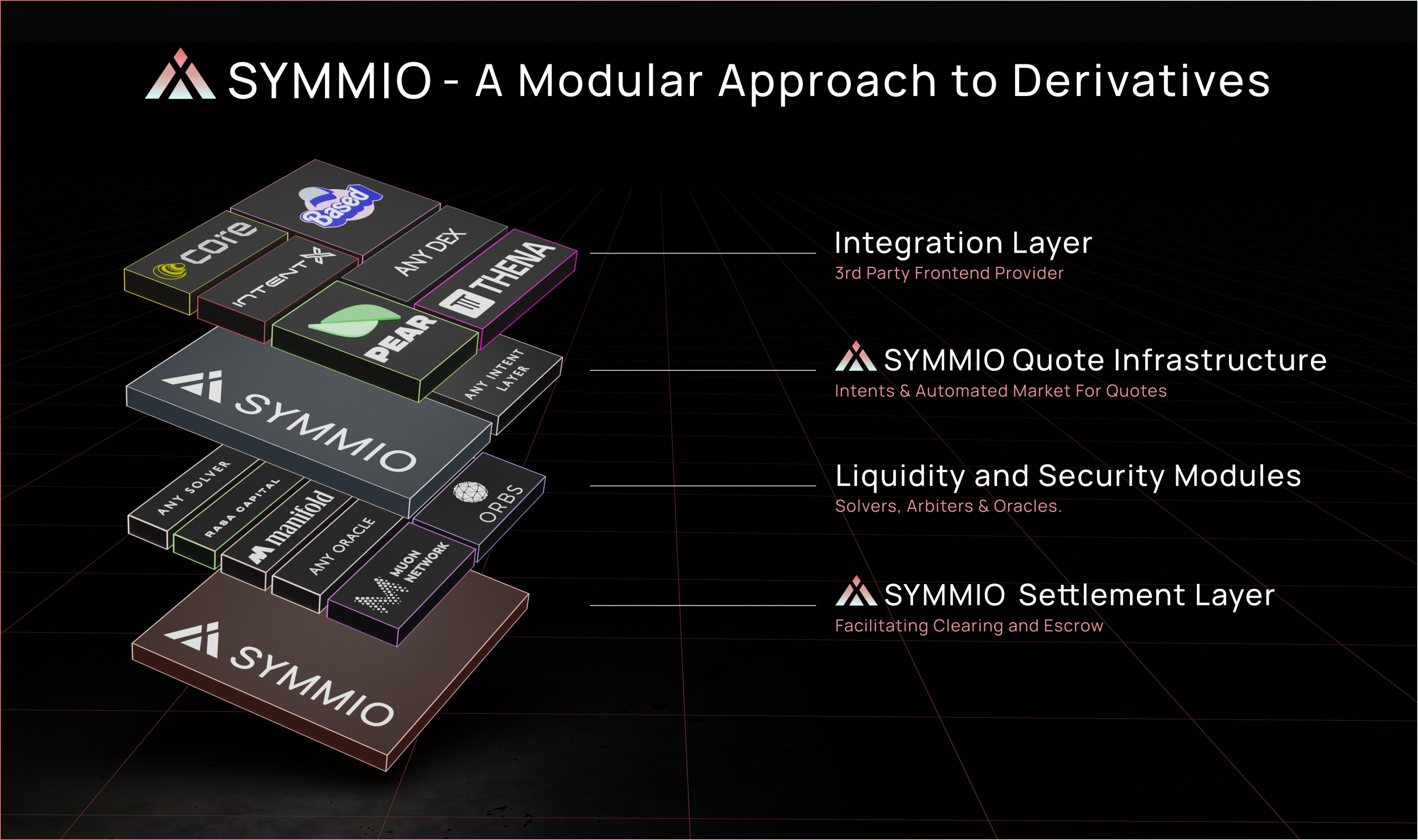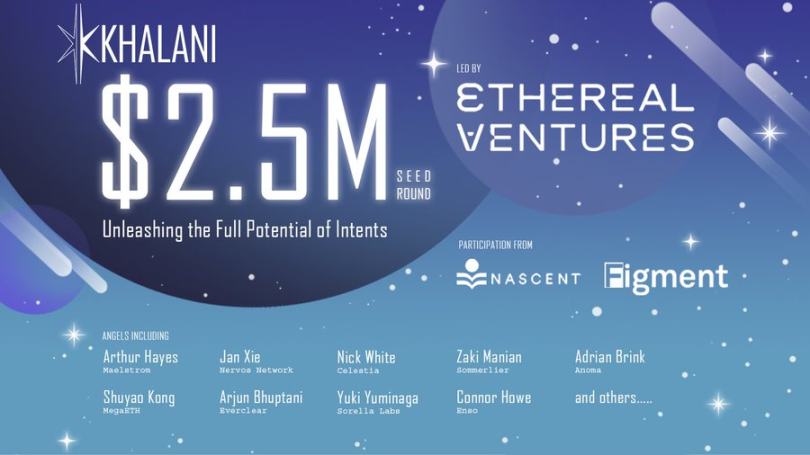Xu hướng mới nổi của Web3: cái nhìn về các dự án tập trung vào mục đích
Original author: Nicky, Foresight News
Shortly after Paradigm published its article “Intent-Based Architectures and Their Risks” in June last year, the concept of “intent” became more popular. In July of the same year, Paradigm published an article on the top 10 areas of interest, with “Intent-centric protocols and infra” ranking first, which shows the importance that institutions attach to this concept.
The concepts of “intention” and “intention-centered”
Intent simplifies the operation process by specifying the intention of the starting point and the result of the end point, thereby improving the user experience.
Intent-based applications provide digital users with a way to execute applications, reduce costs and improve efficiency. Basically, intent can be seen as a digital matching mechanism. Its principle is to connect user needs with feasible solutions, simplify the complex process in the middle, and provide a concise final result.
Image source: Foresight Ventures
On this basis, we built an Intent-centric protocol and application, which helps users to use DApps by simply stating the goals or intentions they want to achieve. The system will automatically parse and execute the corresponding operations and get the desired results. This design greatly simplifies the interaction process between users and DApps, lowers the threshold for use, and allows even non-Degen users to easily get started and experience the convenience and advantages brought by decentralized applications, thereby lowering the entry threshold for Web3 and bringing in more users.
Inventory of Intention-centered projects
1. General Intent Network Solution
Across Protocol
Across is an intent-driven interoperability protocol. It is the only cross-chain intent protocol currently in use, enabling value transfer in the fastest and lowest cost way without sacrificing security. Across has worked with Uniswap Labs to develop the first cross-chain intent standard ERC-7683, an intent-based universal standard for cross-chain interoperability designed to enhance connectivity, user experience, and cost-effectiveness between blockchain networks. In August of this year, Optimism announced the adoption of the ERC-7683 cross-chain intent standard, which aims to enable high-speed ETH and USDC transfers on Superchain and further promote application-layer interoperability in the broader Ethereum ecosystem.
In August this year, cryptocurrency trading platform Coinbase included Across Protocols native token ACX in its listing roadmap.
Anoma
Anoma is a universal intent machine that changes the way decentralized applications (DApps) are built. It abandons the traditional transaction-based model and adopts an intent-driven approach, allowing users to directly define the desired results without having to delve into complex calculation steps. This declarative nature simplifies the user interaction process and makes the process of building DApps more intuitive. Anomas intent machine not only complements existing virtual machines, but also provides a high-level abstraction layer that allows users to easily interact with the blockchain without having to delve into technical details. Its universality ensures compatibility with any blockchain, opening a new door for developers to build intent-driven applications.
In addition, Anoma has introduced unique features such as permissionless intent infrastructure, intent-level composability, information flow control, and heterogeneous trust. These features together unlock new application scenarios that are difficult for traditional virtual machines to involve, and promote the further development of the ecosystem.
Bento Batch
Bento Batch is an Intent Transaction Layer (ITL) designed to make blockchain more efficient. This layer redefines how wallets interact with decentralized applications (DApps). In the ITL, transactions are optimized to directly achieve the expected results of various operations. Users no longer need to sign each transaction one by one, nor do they need to delve into the details of each transaction. Instead, they only need to clarify their goals and needs, and the ITL will efficiently meet these needs. This approach greatly simplifies the transaction process, reduces gas fees and improves the user experience.
Cowswap
Cow Protocol is a permissionless trading protocol that discovers prices through batch auctions and aims to maximize liquidity. It aggregates all available on-chain liquidity sources by looking for coincidence of wants opportunities, that is, when two users each have something the other wants. Unlike traditional trading protocols, Cow Protocols processors compete to provide users with the best solution to achieve their intentions.
Cow Swap is the front-end interface of Cow Protocol, a decentralized exchange (DEX) that helps users find the lowest trading price across all DEXs and aggregators through an intent-centric model. Its design is intent-centric and protects users from front-running and other harmful MEVs. Cow Swaps new feature Cow Hooks allows developers and advanced traders to write custom operations (such as trading, cross-chain, staking, deposits, etc.) and execute these operations within a single transaction, thereby better realizing users trading intentions.
Image source: @defi_naly
dappOS
dappOS is an intent execution network with a latest valuation of $300 million. It is one of the leading projects in the current intent track. In March this year, dappOS completed a $15.3 million Series A financing, led by Polychain, with participation from Nomad Capital and IDG. Last July, dappOS announced the completion of a seed round of financing at a valuation of $50 million, led by IDG Capital and Sequoia China, with participation from OKX Ventures and HashKey Capital. In addition, dappOS was selected for the Binance Labs Season 5 incubation program in November 2022, and received a Pre-Seed round of financing from Binance Labs in June 2023.
dappOS recently launched Intent Assets, which aims to solve the problem of rapid loss of TVL after the release of airdrop rewards.
Tài chính Enso
Enso Finance is an intent engine that aims to drive an intent-centric future. As an independent L1 Tendermint blockchain, Enso is driven by network participants to provide efficient execution and extensive integration. Previously, Enso Finance announced the launch of the shared network state Enso Intent Engine, which aims to simplify smart contract interactions on the blockchain and support the construction of tradable data in various blockchain frameworks. The Enso Intent Engine builds tradable data in various blockchain frameworks by sharing a map of smart contract interactions, allowing developers to automatically handle complex blockchain interactions simply by expressing their intent. This simplifies the integration of smart contracts with blockchains, and can better respond to requests such as state changes, token transfers, NFT transactions, and DeFi strategy execution.
In June this year, ENSO announced the completion of a $4.2 million financing, led by Ideo Ventures and Hypersphere, with more than 60 angel investors participating. The new funds will be used to launch the Cosmos-based L1 blockchain this year and for continued product development.
Thiết yếu
Essential is a blockchain that uses a declarative, intentional architecture to redesign blockchain interactions from first principles, making blockchain technology more intuitive and easier for developers and users around the world to use. In August this year, Essential, an intent-based crypto infrastructure company, completed a $11 million Series A financing round, led by Archetype, with participation from IOSG and Spartan. Last September, Essential completed a $5.15 million seed round of financing, led by Maven 11, with participation from Robot Ventures, Karatage, and others.
Recently, Essential launched Pint, Essentials declarative smart contract language, which uses constraint modeling to directly act on blockchain state changes. It combines modern programming features such as type safety, user-defined types, and scalability, and simplifies the implementation of protocol logic through an intuitive interface. Unlike imperative languages, Pints declarative contracts allow developers to see what they get, greatly simplifying the development and understanding of smart contracts.
FluxLayer
FluxLayer is a full-chain intentional liquidity layer powered by EigenLayer. In August this year, Binance Labs Fund announced the second batch of projects incubated in the seventh season, and FluxLayer was among them.
Mạng hạt
Particle Network is the first intention-centric Web3 modular access layer, which aims to promote the interaction efficiency between users and chains from the perspective of user introduction convenience, interaction efficiency, data autonomy and modular adaptability covering the entire user interaction cycle. Particles main product is the universal account, which allows users to interact with funds from different blockchains.
In June this year, Particle Network announced the completion of a $15 million Series A financing, led by Spartan Group and Gumi Cryptos Capital, with participation from SevenX Ventures and others. This round of financing brings Particles total financing to $25 million. In August this year, Binance Labs announced an investment in Particle Network, and the newly raised funds will be used to expand the global team, enhance the functionality and integration of its chain abstraction ecosystem, and ensure the launch of its L1 mainnet later this year.
Ruby Protocol
Ruby Protocol is an intention-centric account and access layer, dedicated to building an intention-centric, privacy-focused and interoperable Web3 infrastructure. Ruby Protocol provides services such as account abstraction (AA), asset bridging (AB), access control (AC), etc., aiming to accelerate the development and large-scale application of Web3. Through integration with platforms such as LayerZero Labs, Arbitrum, and Optimism, it provides Web3 with a chain abstraction layer that supports scalability, interoperability, and privacy protection.
In June this year, Ruby Protocols native token RUBY was listed on trading platforms such as Bybit.
Self Chain
Self Chain is a modular, intent-centric Layer 1 blockchain and keyless wallet infrastructure that enables multi-chain Web3 access through MPC-TSS/AA technology. The system uses large language models (LLMs) to interpret user intent, simplify the user experience, and ensure asset security and autonomous management through keyless wallets. Self Chain combines account abstraction with MPC-TSS technology to provide secure signatures and low-cost transactions, improving the security and ease of use of blockchain interactions.
Self Chain (SLF) is a rebranding of Frontier (FRONT), expanding from a wallet project to a Layer 1 blockchain based on Cosmos-SDK, and designing a new token economics. There are 360 million SLFs, of which 36 million are permanently locked for foundation nodes, 90 million are migrated from FRONT to SLF, 10 million are allocated to new investors as validators (with a total lock-up period of 18 months), 36 million are allocated to equity investors (with a total lock-up period of 36 months), 30 million are allocated to the core team (with a total lock-up period of 6 years), and 68 million are used for the ecosystem (1.5 million are released per month).
Solvers Protocol
Solvers Protocol is a cross-chain infrastructure for solvers and intent protocols. Solverscan, a data retrieval platform designed for solvers and intent protocols, has been launched. Currently, CoWSwap, Uniswap X and 1Inch Fusion are supported. Each solver has its own dedicated analytics dashboard, and you can view the leaderboard to understand the performance of the solver over time. More intent protocols will be incorporated into the ecosystem in the future.
SUAVE
SUAVE was created by Flashbots and is committed to achieving full decentralization of block construction by stripping away the memory pool and block builder roles in the blockchain. SUAVE will gradually implement its strategic goals through three phases, and ultimately achieve an intention-centric blockchain ecosystem. Last July, Flashbots completed a $60 million Series B financing round at a valuation of $1 billion. The funds will be used to develop the Suave platform, which allows users to transact more cheaply and privately on the blockchain.
In August this year, SUAVE launched its first public testnet, Toliman, through which developers can build tools such as intent systems, auctions, and AI agents, and take advantage of two new features: EIP-712 signature transactions and high-performance computing capabilities provided by TEE Kettle. These features not only improve the user experience, but also bring more flexible order flow control and privacy protection to decentralized application developers.
2. Intentional solutions for specific functions
DeFi
Aperture Finance
Aperture Finance is an AI-driven intention platform that simplifies DeFi operations. In May this year, Aperture Finance completed a $6.7 million Series A financing with a valuation of $250 million. This round of financing was led by Skyland Ventures and participated by Alchemy. The new funds will be used to develop infrastructure, expand the network, and enhance user experience. Its native token APTR was launched on trading platforms such as Bybit at the end of May this year.
According to the roadmap released by Aperture Finance, it is expected to provide comprehensive liquidity tool support and intent functions for Aerodrome Slipsteam on the Base network in the third quarter of this year. In addition, a system will be developed that can provide data analysis functions for the liquidity positions managed by Aperture at the position level and across positions, so as to better understand and optimize liquidity conditions.
DEX
1Inch Fusion
1Inch Fusion is an intention-based trading model launched by 1Inch Network. It converts users trading needs (ie, intentions) into actual transactions without the need for users to manually set tedious transaction details.
The Fusion model combines 1Inchs limit order protocol and aggregation protocol, and introduces professional market makers (Resolvers) to provide centralized and decentralized liquidity through a decentralized trading and matching system. In the Fusion model, users orders are completed by Resolvers, and Gas fees are also paid by Resolvers. Users sign off-chain orders (intentions) through the 1Inch platform, including the assets, quantity, price, and time range of the transaction. After that, the users intention will be sent to the Resolvers network. Resolvers compete to execute these orders and conduct Dutch auctions. The price starts high and gradually decreases. The first Resolver to accept the order wins. Once the order is executed, the transaction results will be settled on the chain without manual intervention by the user.
UniswapX
UniswapX introduces an intent-centric trading architecture, the core of which is to simplify the user experience: users only need to clarify the purpose of the transaction (such as exchange X token for as many Y tokens as possible), without having to delve into the complex process of transaction execution. This architecture achieves an efficient and transparent trading process through the combination of off-chain smart matching and direct on-chain transactions. After the user submits the transaction intention, the system publishes it to the order book service cluster, and professional builders (Fillers) are responsible for scanning multiple liquidity pools, analyzing data in real time and predicting price trends, so as to provide the best quotes and execute on-chain transactions. This mechanism not only improves transaction efficiency, but also ensures the openness and transparency of the transaction process.
Shogun
Shogun is an intention-centric DeFi protocol that aims to maximize traders extractable value (TEV) through optimized order flow and full chain abstraction. In May of this year, Shogun developer Intensity Labs completed a $6.9 million seed round of financing, led by Polychain Capital and DAO 5, with participation from Arrington Capital, Arthur Hayes and others. This round of financing was conducted in a simple future equity (SAFE) structure and came with token warrants, bringing Shoguns fully diluted token valuation to $69 million. In February of the same year, Binance Labs announced its first batch of incubation projects in S 6 (Incubation Season 6), and Shogun was among them.
Các dẫn xuất
IntentX
IntentX, as the next generation of OTC derivatives exchange, provides perpetual futures trading. The platform integrates cutting-edge technologies such as cross-chain communication, account abstraction and SYMMIO, realizes full-chain deployment, reduces fees, improves liquidity and capital efficiency, and enhances scalability. IntentX adopts an intent-based architecture, abandons the traditional order book and vAMM model, allows traders to express trading intentions, and is executed by external solvers. In February of this year, IntentX announced the completion of a round of strategic financing with a total fundraising of US$1.8 million. This round of financing was led by Selini Capital, with participation from Orbs, Mantle Ecofund and others. The financing aims to strengthen IntentXs partnership with market makers and the DeFi ecosystem.
According to the official roadmap released by IntentX, features such as account abstraction and timely transactions will be added in the future.
Perpetual Hub
In May this year, Layer 3 blockchain Orbs launched Perpetual Hub, an intent-based on-chain perpetual futures trading solution. Developed in collaboration with THENA, SYMMIO, and IntentX, Perpetual Hub uses Orbs L3 technology to provide traders with the tools they need to trade perpetual futures on-chain at a CeFi level. Perpetual Hub supports on-chain perpetual futures trading, and the service includes Hedger, Liquidator, and Price Oracle.
SYMMIO
SYMMIO is a global derivatives settlement layer that is modular and intent-centric by design. Through bilaterally isolated instances, SYMMIO enables builders and market makers to issue highly liquid derivatives on-chain and guard against systemic risks. Our design optimizes pre-opening quotes, does not require locked capital, and the execution layer is based on intent, and the settlement process is highly secure. SYMMIO creates a free market environment that enables market makers, solvers, oracles, intent providers, and DEXs to compete and cooperate with each other to jointly build a global risk settlement layer.
cái ví
MetaMask
In January, MetaMask was testing a feature called “transaction routing” that aims to provide optimal execution and improve user experience. The technology was developed by Special Mechanism Group, which was acquired by MetaMask’s parent company Consensys last year. “Transaction routing” can transform the MetaMask wallet into an “intention-centric” protocol, which means that users will be able to rely on third parties to find the best path for transactions.
Cross-chain interoperability protocol
tài chính Owlto
Owlto Finance is an intention-centric cross-chain interoperability protocol, and also a full-chain interoperability cross-chain bridge. It has currently connected to more than 45 networks in the BTC, ETH, and SOL ecosystems. In May of this year, Owlto Finance announced the completion of a strategic round of financing of US$8 million, led by Bixin Ventures and CE Innovation Capital, with participation from Presto, GSR, and others. In July of this year, Owlto Finance announced the completion of a new round of financing at a valuation of US$150 million, with participation from Matrixport and others.
trí tuệ nhân tạo
Optopia
Optopia is an AI-driven, intent-centric Layer 2 network that supports permissionless intent creation. By driving AI agents to execute intent through token economics, Optopia has built an intelligent and active Layer 2 network that simplifies Web3 operations, lowers user entry barriers, and unleashes Web3 potential. In May of this year, Optopia completed its seed round of financing, with participation from G·Ventures, Kucoin Ventures, and others. In July of the same year, Optopia announced the economics of the token OPAI. The total supply of Optopias native token OPAI is 10 billion, of which 50% is reserved for Booster Event, 25% is allocated to ecological rewards, 10% is allocated to the community, 7% is allocated to early investors, 5% is allocated to the market, and 3% is allocated to liquidity. 10% of the total supply will be allocated to participants in the first phase of Booster Event at TGE.
On-chain tools
Khalani Network
Khalani is a decentralized solver platform that aims to enhance the experience of Web3 users in the blockchain ecosystem. Through a multi-chain collaborative network, Khalani connects solvers and intent applications to solve problems such as liquidity fragmentation, complex user experience, and inefficient transaction execution. The platform significantly reduces the cost of building and operating solvers, enabling developers to build intent applications. In August this year, Khalani completed a $2.5 million seed round of financing, led by Ethereal Ventures, with participation from Nascent, Arthur Hayes, and others.
bản tóm tắt
The application of the intention-centric concept in the blockchain field is gradually expanding, covering cross-chain transactions, crypto infrastructure, DeFi, modular blockchains, data sharing, and wallet and cross-chain interoperability. By simplifying processes, optimizing user experience and improving efficiency, intent-based projects are driving innovation and development in the Web3 ecosystem. In the future, as more projects emerge and technology continues to mature, the intention-centric concept is expected to play a greater role in the Web3 field, providing digital users with a more convenient and efficient application experience.
This article is sourced from the internet: Web3’s emerging trends: a look at intent-centric projects
Tiêu đề Hạ viện Hoa Kỳ không thể phủ quyết quyền phủ quyết SAB-121 của Biden Phần lớn các thành viên của Hạ viện Hoa Kỳ đã bỏ phiếu chống lại sự ủng hộ của Tổng thống Biden đối với chính sách kế toán tiền điện tử của Ủy ban Chứng khoán và Giao dịch (SAB-121), nhưng không đạt được hai phần ba số phiếu cần thiết để lật ngược quyền phủ quyết. SAB-121 yêu cầu các ngân hàng phải đưa tài sản tiền điện tử của khách hàng vào bảng cân đối kế toán của họ, làm tăng yêu cầu về vốn của các ngân hàng. Đảng Cộng hòa thúc đẩy việc thu hồi ngay cả khi SEC đàm phán với ngành ngân hàng để sửa đổi chính sách. Hiệp hội Blockchain tin rằng SAB-121 là một công cụ để SEC trấn áp tài sản kỹ thuật số. Văn phòng Trách nhiệm Giải trình của Chính phủ xác định rằng SEC coi chính sách này là hướng dẫn chứ không phải là các quy tắc chính thức và Quốc hội đã cố gắng lật ngược chính sách này thông qua CRA, nhưng Biden đã phủ quyết. Các nhà lãnh đạo ngành…
